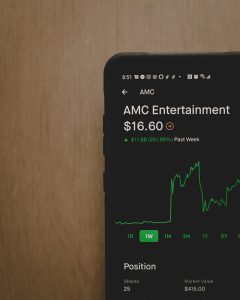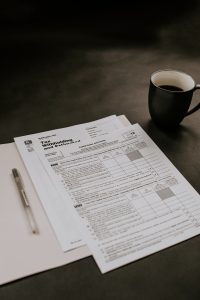Moving averages are one of the most commonly used technical indicators in the forex market. They are used to smooth out price fluctuations and identify trends in the market. A moving average is calculated by taking the average price of a currency pair over a specified period of time. The period of time used to calculate the moving average can vary depending on the trader’s preference, but the most commonly used periods are 50, 100, and 200.
The numbers used in moving averages are the closing prices of a currency pair over a specified time period. For example, if you are using a 50-day moving average, the indicator will take the closing prices of the currency pair for the past 50 days and calculate the average. The result is a smoothed-out line that shows the general direction of the trend.
Moving averages are often used in conjunction with other technical indicators, such as relative strength index (RSI) and stochastic oscillators, to confirm signals and identify entry and exit points. Traders use moving averages to identify the direction of the trend and to determine whether a trend is strong or weak.
There are three types of moving averages that traders use: simple moving average (SMA), exponential moving average (EMA), and weighted moving average (WMA).
Simple Moving Average (SMA)
A simple moving average is the most basic form of a moving average. It is calculated by taking the sum of the closing prices of a currency pair over a specified period of time and dividing it by the number of periods. For example, if you are using a 50-day moving average, the SMA would be calculated by adding up the closing prices of the currency pair for the past 50 days and dividing it by 50.
The advantage of using a simple moving average is that it is easy to calculate and understand. However, it can be slower to react to price changes compared to other types of moving averages.
Exponential Moving Average (EMA)
An exponential moving average is a more complex form of a moving average. It gives more weight to recent price data, making it more sensitive to price changes compared to a simple moving average. The formula for calculating an EMA involves using a multiplier that gives more weight to recent price data.
For example, if you are using a 50-day EMA, the multiplier would be 2/(50+1) = 0.038. The current EMA value would be calculated by taking the closing price of the currency pair for the current day, multiplying it by the multiplier, and adding it to the previous day’s EMA multiplied by (1 – multiplier).
The advantage of using an EMA is that it is more responsive to recent price changes compared to a simple moving average. However, it can be more volatile and may generate more false signals.
Weighted Moving Average (WMA)
A weighted moving average is another form of a moving average that gives more weight to recent price data. However, it uses a different weighting scheme compared to an EMA. Instead of using a multiplier, it assigns a weight to each price data point based on its position in the time series.
For example, if you are using a 50-day WMA, the weight for the most recent day would be 50, the weight for the second most recent day would be 49, and so on. The current WMA value would be calculated by taking the sum of the product of each closing price and its corresponding weight, and dividing it by the sum of the weights.
The advantage of using a WMA is that it gives more weight to recent price data, making it more responsive to price changes compared to a simple moving average. However, it can be more volatile and may generate more false signals.
In conclusion, moving averages are a widely used technical indicator in the forex market. They help traders identify trends, confirm signals, and determine entry and exit points. The numbers used in moving averages are the closing prices of a currency pair over a specified period of time, and the most commonly used periods are 50, 100, and 200. There are three types of moving averages that traders use: simple moving average (SMA), exponential moving average (EMA), and weighted moving average (WMA). Each type has its advantages and disadvantages, and traders need to experiment to find the one that works best for them.






